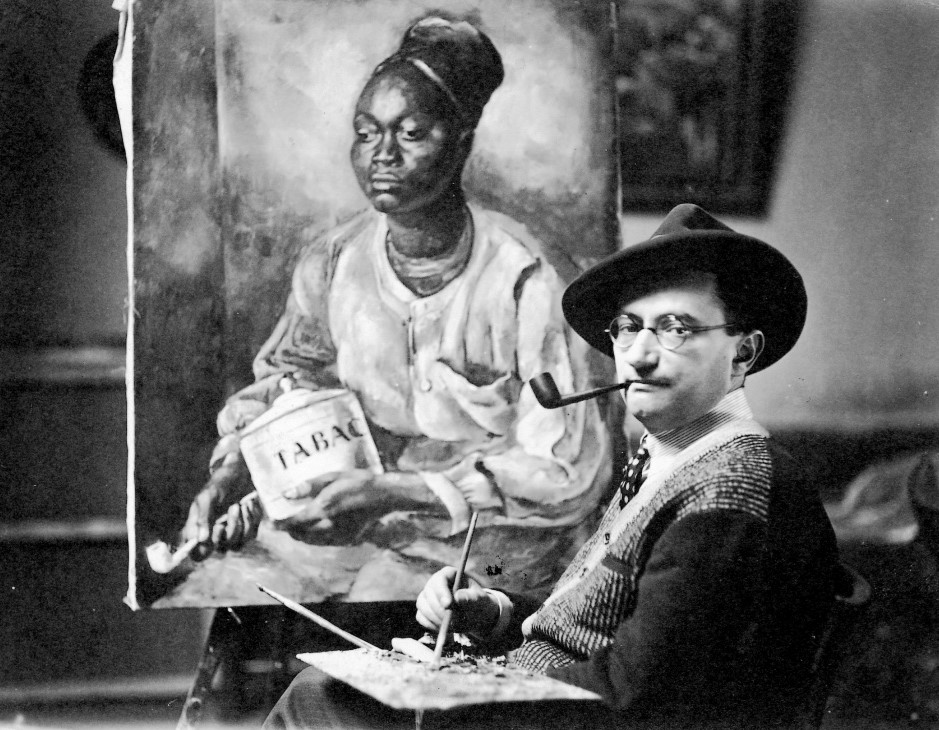Nathalie KRAEMER
January 3, 2019Jacob KRAUTER
January 3, 2019Roman KRAMSZTYK
WARSAW (POLAND) 1885 - WARSAW 1942
Roman Kramsztyk was born into a middle-class family in Warsaw. He studied painting between 1903 and 1904 at the Academy of Fine Arts in Warsaw, and continued to study at the studio of the painter Adolf Edouard Herstein. He then enrolled in the School of Fine Arts in Munich, where his father, a pediatrician, sent him to study. He exhibited his work for the first time at the Salon d’Automne in Paris in 1911 and at exhibitions in Berlin and Barcelona in 1912. In 1913, his paintings exhibited in Krakow were a resounding success. During the following ten years, he traveled a lot to Poland with his wife, who was the sister of painter Louis Marcoussis. He had lived in Paris for four years when World War I broke out. He then left France for Poland. In 1918, he was in Berlin and met his first master Herstein again.
Back in Poland, in 1924, Kramsztyk joined the avant-garde group Rytm (Rythm). He was the only portrait painter in this group. He went through a period where he doubted his art and questioned his painting. He left Rytm in 1932. His style changed radically and he went back to a more traditional painting. He lived in the rue Denfert-Rochereau, and spent his time between Paris and Poland, where he had become famous. He was commissioned to produce works for industrialists and politicians. In July 1939 he left Paris for Warsaw once again but was trapped in the ghetto. There he executed numerous portraits, and made it his mission to paint the war’s atrocities, which he observed in Warsaw and in the Jewish ghetto life. A sketchbook, which presented tragically realistic drawings, was found and is preserved in Israel. Several versions of his death exist, which concord for the essential: during the liquidation of the ghetto, he was “mortally wounded by gun shot in the apartment where he was living, among his paintings”, between August 6 and August 10, 1942 (testimony of Wladyslaw Szpilman in his autobiography, The Pianist, which inspired the eponymous film by Roman Polanski), “by a member of the Ukrainian SS militia. His death is described in Szpilman’s book.” (Quotes from L. Weissberg, Catalogue raisonné, p. 62).
Stories of Jewish Artists of the School of Paris 1905-1939
FRENCH-ENGLISH
Capitale des arts, le Paris des années 1905-1939 attire les artistes du monde entier. De cette période de foisonnement, un terme est resté, celui d'Ecole de Paris, qui recouvre une grande diversité d'expression artistique. Dans ce brassage dont Montparnasse est le creuset, un groupe se distingue : celui des artistes juifs venus de Russie, de Pologne et d'Europe centrale. Si leurs styles sont variés, un destin commun les rassemble : ils fuient l'antisémitisme de leur pays d'origine. Certains ont connu la célébrité dès les années 1920, tels Soutine, Lipchitz ou Chagall. D'autres n'ont pas eu le temps ou la chance d'y accéder. Près de la moitié a péri dans les camps de concentration nazis.
From 1905 to 1939, Paris attracted artists from all over the globe as the capital of the art world. This period of artistic proliferation became known as the School of Paris, and includes a great diversity of artistic expression. Within the teeming art world centred on Montparnasse, one group set itself apart: Jewish artists from Russia, Poland, and Central Europe. Although their styles were diverse, they shared the common fate of fleeing anti-Semitic persecutions in their home countries. Some became famous in the 1920s, such as Soutine, Lipchitz, and Chagall, while others did not have the time or the luck to gain renown. Nearly half of these artists died in Nazi concentration camps.





